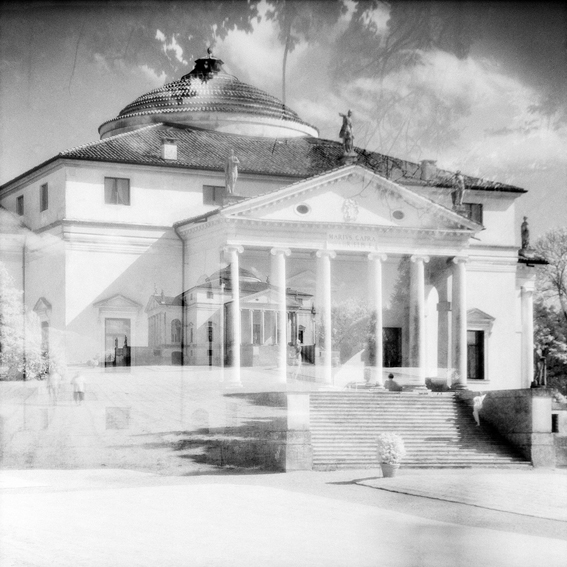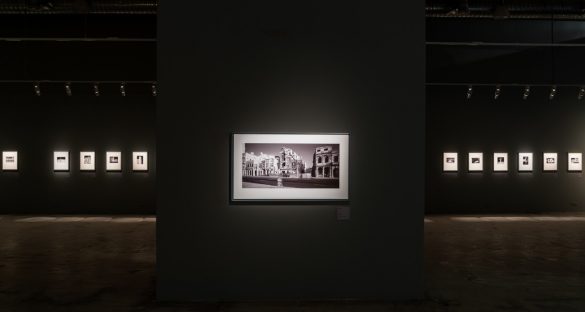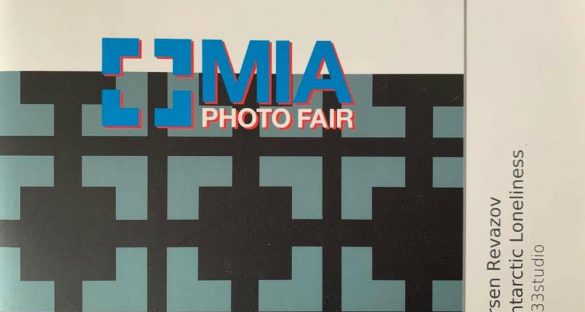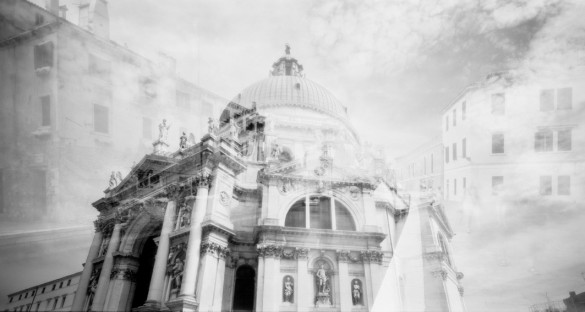Joking aside, I read a number of different smart books about the fourth dimension while still a child, I read about the mathematical paradoxes, Gardner, Perelman, and also various works of science fiction. They also contained all types of additional dimensions, but I naturally didn’t imagine that they could be encountered in real life, on this side of the book. Subsequently I grew up, started reading certain other books, and even started writing. I took up photography. As part of work on my second novel, the continuation of “Solitude-12”, I began studying Roger Penrose, Kip Thorne, Brian Greene, Steve Weinberg, Lee Smolin and many others, because in one of the lines of the novel my hero is confronted by non-evident physical and mathematical realities – utterly non-evident. And I rapidly realised that I wouldn’t be able to progress without String Theory – in the opinion of most modern physicists, it provides a far better explanation of the world structure than all other theories. It states that there are not three or four spatial dimensions, but instead nine to 26, depending on modifications to the theory. They are described well by words and formulas. However, I had a childish desire – I wanted to understand how this all looks.
For this truth is interesting: how does our world look from the perspective of the fourth dimension?
First of all I performed a mental experiment. A simple one that did not require pencil or paper. I drew a distance (in my head). It stands to reason that it had only one dimension – its length. OK. Then I placed the sharp of my hand on the distance and moved my hand by the length of the distance. I ended up with a square. It goes without saying that it had two dimensions: length and width. Then I placed my palm on the square, raised it up to a height equal to the length and width and ended up with a cube. (Who would have doubted it?). A cube has three dimensions: length, width and height. And therefore it is three-dimensional. I trained several times to introduce new dimensions. It appeared that I had succeeded.
Using the same elusive movement of thought that I had used to turn my palm upwards, transforming my original and familiar square into one that was still my original and familiar cube, I completed the breath-taking act of transforming the cube into a tesseract. Only here the palm no longer went upwards, but the middle of nowhere. And in a manner of speaking I had seen a tesseract. I don’t mean with my own eyes, but rather through my internal sight. However, I saw it! A four-dimensional cube, that is a hypercube. In other words, the object had the main properties of a cube: all its faces are equal to each other, and all were right angles, but it already had four dimensions: length, width and height, and also a fourth dimension. And at this point I wanted to come up with a name for this dimension. The words squared or cuboid appeared in my head, but I discarded them as anti-artistic. The abbreviations 4D and 5D already exist, and there is no need to boast.
I discovered that the most splendid aspect of the fourth dimension was its intellectual comprehensibility. You can work with it. In other words, a student mathematician already knows how to calculate the volume of the tessseract, the number of its faces and surface area. In order to complete the experiment successfully, I wanted above all to understand how this tesseract would appear to us, the people of Earth? That is, people who still live in three spatial dimensions. How can one make the transition to practice from esotericism?
I understood quite rapidly that the tesseract would appear each time differently to earthlings. For example, we can project the cube on a plane using different methods: balance it on a point, set it on an edge, set it on the plane. And each time the picture will be different. The same holds true for the three-dimensional tesseract. It will look differently, depending on how the inhabitants of the fourth dimension show it to us.
In actual fact, the fourth dimension should not be considered a new discovery. It was announced by Bernhard Riemann at a wonderful lecture on 4 June 1854 at the University of Göttingen, which has entered the annals of science. It spread as an intellectual plaything that enthralled everyone towards the end of the 19th century. Subsequently the first attempts appeared to illustrate the dimension. Michio Kaku writes that towards the end of the 19th century the fourth dimension hurtles throughout Europe and evidenced widespread public interest. Writers, philosophers and artists were wild about the topic. Picasso’s cubism arose partly under the impression of the fourth dimension. (The portraits of women using Picasso’s brush, whose eyes look forwards, while their noses are out of joint, represent an attempt to present a four-dimensional perspective, for the perspective of the fourth dimension enables you to simultaneously look at the face, nose and nape of the woman). Writers placed ghosts in the fourth dimension, while theologians understood immediately where God and angels were actually located. This helped them deal with forthcoming materialism.
I also decided to make a significant contribution to the matter of assimilating multiple dimensions and the parallel Universes emerging from the existence of such dimensions. For this purpose, I improvised in the choice of methods: double exposure and infrared film. Double exposure is when the same negative is used to consecutively shoot two frames. In other words, you shot one frame, but did not rewind the film. I cocked the shutter again and shot another one with the same negative. None of this is difficult, you merely need to reduce each exposure by a third. At the same time, nothing is that simple – you have to think simultaneously about two frames, and this is a thought about the fourth dimension, and its synthesis. In other words, when trying to imagine how it will all work, and the specific photons of light that will appear on film from a certain composition, I feel that I myself am in another dimension.
Why film? Why not digital photography? It is clear that a film, in particular large format, has a significant number of advantages over digital: the plasticity, dynamic range and in the end the resolution of wide-format film is higher than a digital sensor. However, why not simply superimpose photographs that have been shot separately on the computer? It goes without saying that I tried. However, it didn’t work. One work can be superimposed on another one in Photoshop. And it is obvious that if you want one work to be illuminated through another one, you need to indicate the degree of transparency of the top work. This can be 50%, 70% or 30% – it doesn’t matter. However, in the case of photo film, unlike Photoshop, in a double exposure shot, the transparency of each fragment, each square millimetre (if not a micron) of the image is specific and unique. And naturally there are seamless transitions formed by photons of light, computer digits. And how is this reproduced manually in Photoshop? By breaking the frame into several thousand fragments and according each fragment its own transparency ratio? Why bother, if you can shoot on a film with double exposure? During the filming, incidentally I shot some of the frames in the conventional manner. Like prototypes. With a single exposure. And we printed them on real paper using this magnifier.
Why infrared film? Because it makes sense to shoot the fourth dimension and parallel worlds in invisible light – the retina of our eye in this range does not react to the quanta, while film reacts, I can show the invisible world to a grateful public. It is a neighbouring world, but at the same different. This is such esoteric knowledge built on a solid scientific basis. And this is why I believed that this was important to me: what if the theologians were right, and God actually lived in the fourth dimension? Surely it would be fascinating to know how our world looked to him?..
P.S. And I selected the 6×6 format because it is a tesseract. Because I wanted squares. Just because I love squares.
Arsen Revazov.




